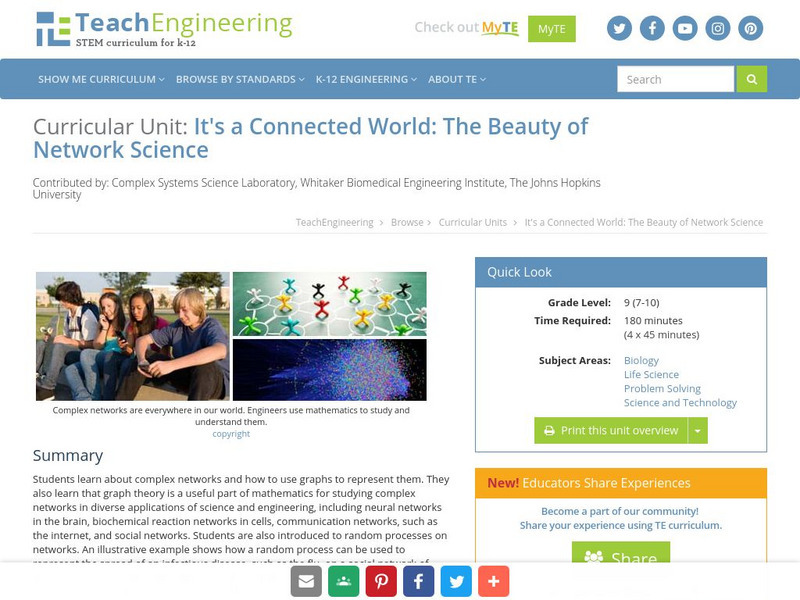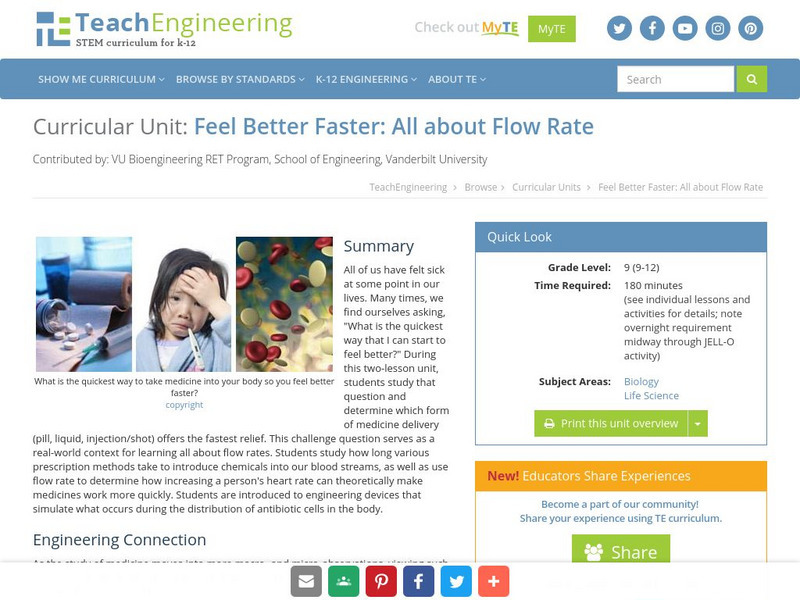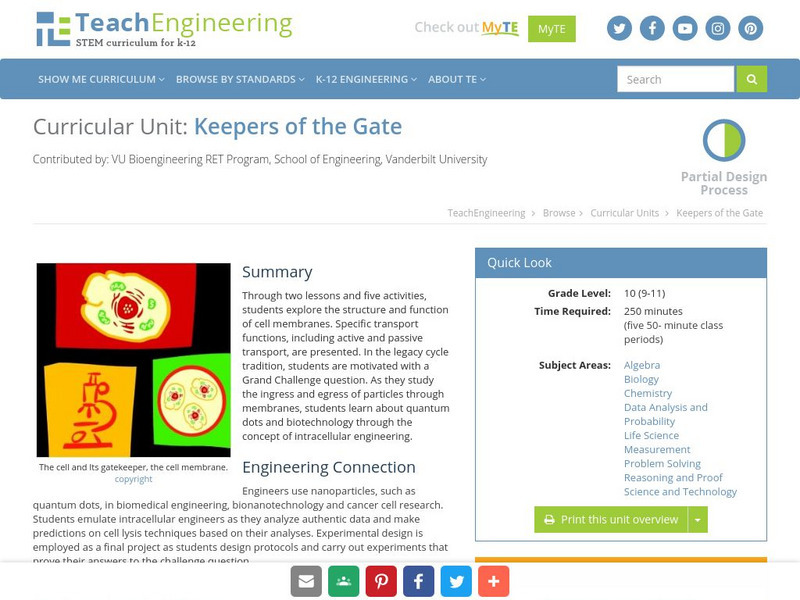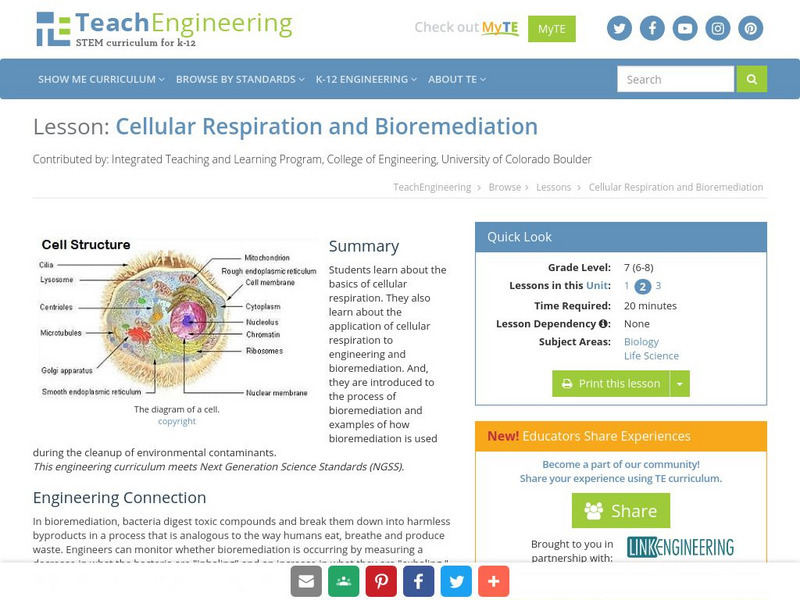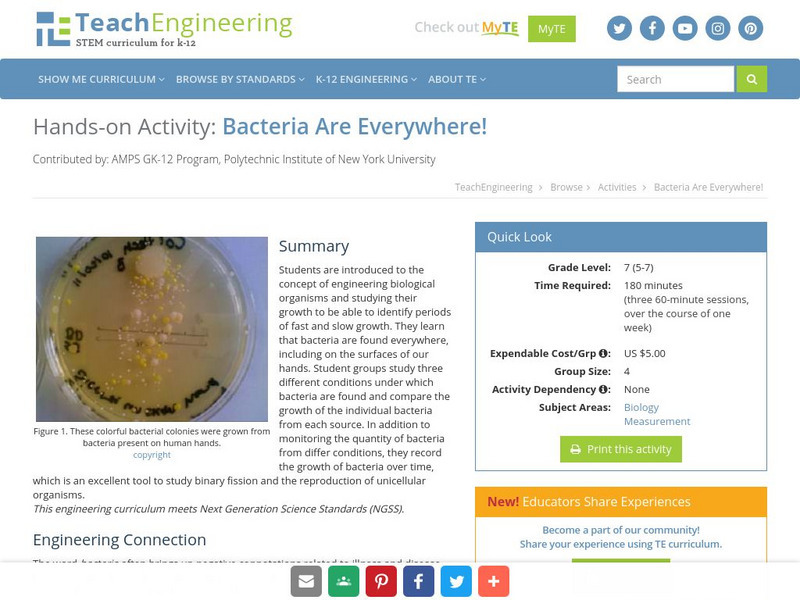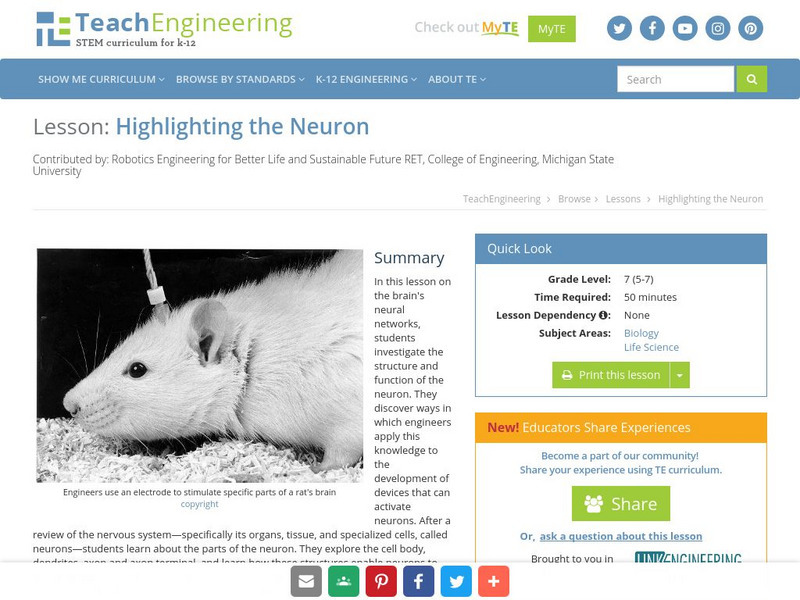TeachEngineering
Teach Engineering: From Sunlight to Electric Current
The lesson will first explore the concept of current in electrical circuits. Current will be defined as the flow of electrons. Photovoltaic (PV) cell properties will then be introduced. This will lead to the principle of "Conservation of...
Library of Congress
Loc: Everyday Mysteries, Why Does Hair Turn Gray?
Explore the science behind gray hair through this summary produced by the Library of Congress.
PBS
Pbs Bloodlines: Technology Hits Home
This site is a must see for any lesson or unit on biotechnology! It is a companion to the PBS video "Bloodlines: Technology Hits Home," although it can certainly be used without the video. It's a fantastic site that will challenge...
PBS
Pbs Bloodlines: Making Precedent
Excellent site where students are challenged to read several case studies and make choices about what they would do in the situation. After they choose they are presented with some of the consequences that their decision may produce in...
TeachEngineering
Teach Engineering: Hydrogen Oxygen Reaction Lab
This lab exercise exposes students to a potentially new alternative energy source-hydrogen gas. Student teams are given a hydrogen generator and an oxygen generator. They balance the chemical equation for the combustion of hydrogen gas...
TeachEngineering
Teach Engineering: Cellular Respiration and Population Growth
Two lessons and their associated activities explore cellular respiration and population growth in yeasts. Yeast cells are readily obtained and behave predictably, so they are very appropriate to use in middle school classrooms. In the...
TeachEngineering
Teach Engineering: It's a Connected World: The Beauty of Network Science
Students learn about complex networks and how to use graphs to represent them. They also learn that graph theory is a useful part of mathematics for studying complex networks in diverse applications of science and engineering, including...
TeachEngineering
Teach Engineering: Feel Better Faster: All About Flow Rate
All of us have felt sick at some point in our lives. Many times, we find ourselves asking, "What is the quickest way that I can start to feel better?" During this two-lesson unit, students study that question and determine which form of...
TeachEngineering
Teach Engineering: Keepers of the Gate
Through two lessons and five activities, students explore the structure and function of cell membranes. Specific transport functions, including active and passive transport, are presented. In the legacy cycle tradition, students are...
TeachEngineering
Teach Engineering: Photosynthesis Life's Primary Energy Source
This lesson covers the process of photosynthesis and the related plant cell functions of transpiration and cellular respiration. Students will learn how engineers can use the natural process of photosynthesis as an exemplary model of a...
TeachEngineering
Teach Engineering: Complex Networks and Graphs
Students learn about complex networks and how to represent them using graphs. They also learn that graph theory is a useful mathematical tool for studying complex networks in diverse applications of science and engineering, such as...
Nature Research
Scitable: Genetics and Society
Get an in-depth look at the ethical, legal, and social implications genetic technologies have on society. Explore the ethical considerations that genetics has on our society with the advances in genetically-tailored treatments, genetic...
Texas Instruments
Texas Instruments: Predicting White Blood Counts
Students find equations, which best-fit the data, using different regression models built into their calculators. The best method of handling this data, is to break the data into sections and fit different periods of time with different...
Read Works
Read Works: Game on by Stephen Fraser
[Free Registration/Login Required] An informational text about stem cell transplants being used to heal injuries and cure disease. A question sheet is available to help students build skills in reading comprehension.
TeachEngineering
Teach Engineering: Cellular Respiration and Bioremediation
Students learn about the basics of cellular respiration. They also learn about the application of cellular respiration to engineering and bioremediation. And, they are introduced to the process of bioremediation and examples of how...
TeachEngineering
Teach Engineering: Bacteria Are Everywhere!
Through this activity, students are introduced to the concept of engineering biological organisms and studying their growth to be able to identify periods of fast and slow growth. Students learn that bacteria are found everywhere,...
The Association of the British Pharmaceutical Industry
Abpi: Infectious Diseases: Immunity
An interactive, self-guided lesson on the function of the human immune system and how medical intervention prevents disease. This lesson has many descriptive animations as well as graphs and diagrams to help with understanding. There is...
TeachEngineering
Teach Engineering: Solar Power
In this activity, students learn how engineers use solar energy to heat buildings by investigating the thermal storage properties of some common materials: sand, salt, water and shredded paper. Students then evaluate the usefulness of...
TeachEngineering
Teach Engineering: Hello, Are You Listening?
Students gain a basic understanding of the engineering components behind telecommunications, in particular, the way telephone communication works to link one phone to another for conventional landline and cellular telephones. During this...
TeachEngineering
Teach Engineering: Android Acceleration
Students prepare for the associated activity in which they investigate acceleration by collecting acceleration vs. time data using the accelerometer of a sliding Android device. Based on the experimental set-up for the activity, students...
TeachEngineering
Teach Engineering: The Keepers of the Gate Challenge
Students are presented with a real-life problem as a challenge to investigate, research and solve. Specifically, they are asked to investigate why salt water helps a sore throat, and how engineers apply this understanding to solve other...
TeachEngineering
Teach Engineering: Highlighting the Neuron
In this lesson on the brain's neural networks, students investigate the structure and function of the neuron. They discover ways in which engineers apply this knowledge to the development of devices that can activate neurons. Includes...
The Association of the British Pharmaceutical Industry
Abpi: Cloning
An in-depth look at cloning and the technology behind it. Students work through interactive learning material, understanding the ethics involved in all types of cloning. There is a suggested classroom activity and a self-checking quiz at...
CK-12 Foundation
Ck 12: Biology: Plant Tissues and Organs Study Guide
Review the main vocabulary and processes in plant tissues and organs.
Other popular searches
- Cell Biology Stem Cells
- Human Stem Cells
- Bioethics of Stem Cells
- Ethical Issues Stem Cells
- Stem Cells Genetics
- Embryonic Stem Cells
- Debates Stem Cells
- Benefits of Stem Cells
- Stem Cells Lesson Plans
- Animal Plant Cells Stem
- Stem Cells for Plannet
- Stem Cells for Plan Net








